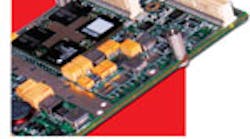The market for tablet computers is exploding, with an estimated 100 million units that will be in use by 2013. The tablet form factor is very compelling because of its small size, light weight, and long battery life. Also, tablet operating systems, like Android, MeeGo, and iOs, have been designed so the input mechanism is touch-oriented, making their applications fun and easy to use.
One such tablet, the Apple iPad, has been a phenomenal success as a media-consumption device for watching movies, reading e-mail, surfing the Web, playing games, and other activities. But one thing is missing to make it the only device you need when going on a business trip: pen input.
Due to the last 40 years of human-machine interface (HMI) research, we have learned that successful interfaces rely on the combination of two key factors: capitalizing on the existing user skill-set, such as the ability to work with both hands simultaneously, and choosing the right input mechanism for performing a given task.
Pen input facilitates handwriting and drawing, which is important because our brain connectivity and the articulation in our arms, elbows, wrists, and fingers give us much greater motor skills when we use a tool. Neanderthals used tools to paint on the walls of their caves, and times haven’t changed that much. Everybody needs a pen, including children learning how to draw and write, engineers sketching a design, and businesspeople annotating a contract.
Accordingly, the ultimate goal for tablet designers should be to replicate the pen-and-paper experience. Pen and paper work so well together: resolution is high, there’s no lag between the pen movement and the depositing of ink, and you can comfortably rest your palm on the paper, with its pleasing texture.
Tablet Requirements
These qualities, however, are not easy to replicate in a tablet computer. You need high responsiveness, high resolution, good rendering, and palm rejection. Writing on a piece of glass with a plastic stylus is not an especially pleasing experience, so you also need coating on the glass and a shape and feel of a stylus that can approximate the pen and paper experience. Most importantly, you need an operating system and applications that have been designed from the ground up to integrate this new approach.
A key part of the equation is multi-touch technology, but not just any multi-touch. You need multi-touch with a keen understanding of the touches happening on the screen. It needs to know if a particular finger touching the device is merely holding it or activating a menu, whether a certain contact point is a finger or a stylus, and, more importantly, it needs to distinguish a palm resting on the top of the display so a user can comfortably write on the device.
In short, handwriting on a tablet computer doesn’t require multi-touch per se but smart detection of what’s happening on the screen. A capacitive touchscreen is not the answer for a professional device a businessperson can use. Capacitive multi-touch is fine for finger-only input.
Dedicated styli for capacitive touchscreens exist. However, such styli feature a large, soft rubber tip that makes them impractical to use for content creation and editing. Optionally, capacitive touch panels may be combined with an active electromagnetic stylus technology, but such an option greatly increases the solution cost and integration complexity.
The VDM Solution
An alternative is the voltage-driven matrix (VDM), a truly multi-touch technology that provides the necessary smart detection, including the all-important capabilities of handwriting rendering and palm rejection. For example, Stantum’s PMatrix detection platform lets users simultaneously move a pen or a stylus (and an unlimited number of fingers) on a screen.
VDM is similar to projected capacitive technology, as it employs conductive tracks patterned on two superimposed substrates (made of glass or hard plastic). However, whereas capacitive technology relies on proximity sensing, VDM is force activated, making it more user-centric and enabling it to work with a pen, a stylus, or any number of implements.
The tablet computer revolution is well underway around the world, with handwriting becoming an increasingly necessary function. Accordingly, device designers and vendors should take proper heed, or they might soon be seeing the handwriting on the wall.
